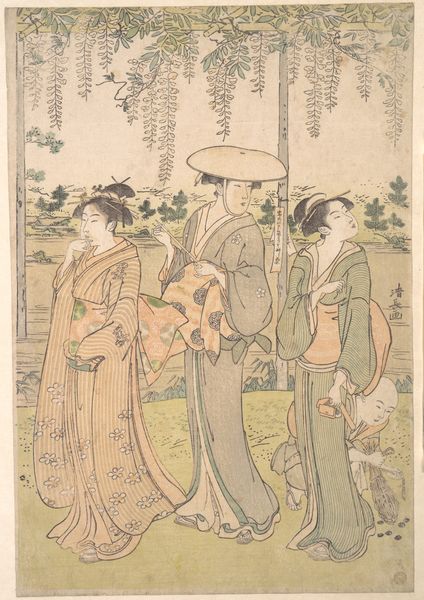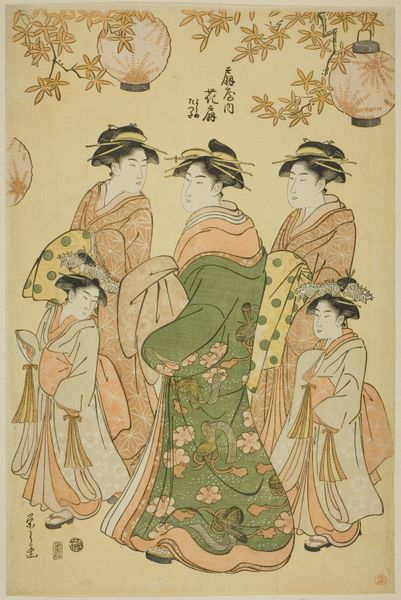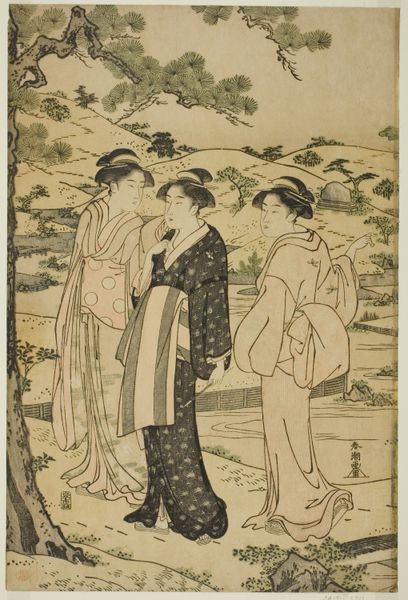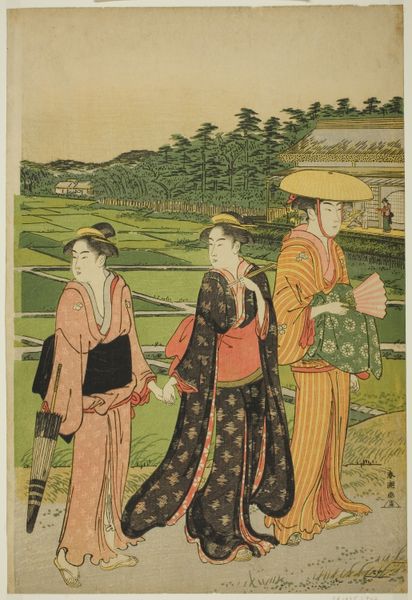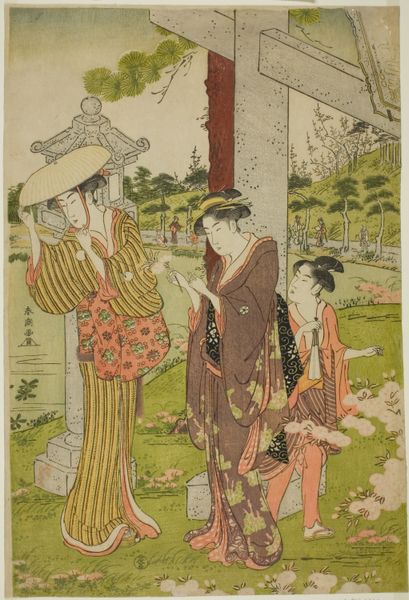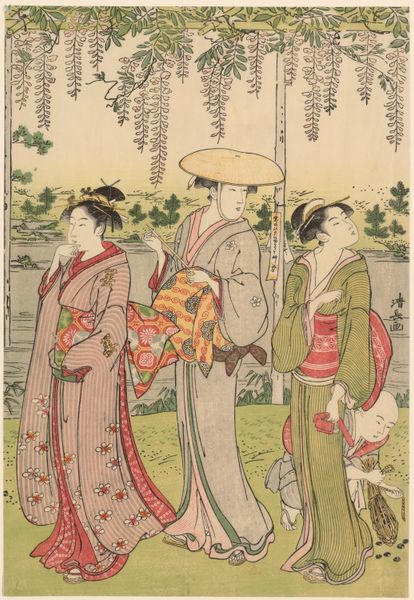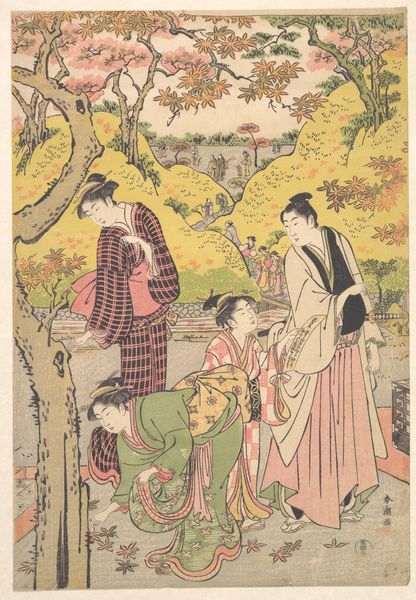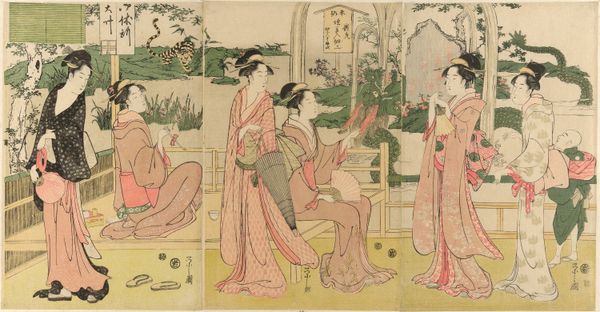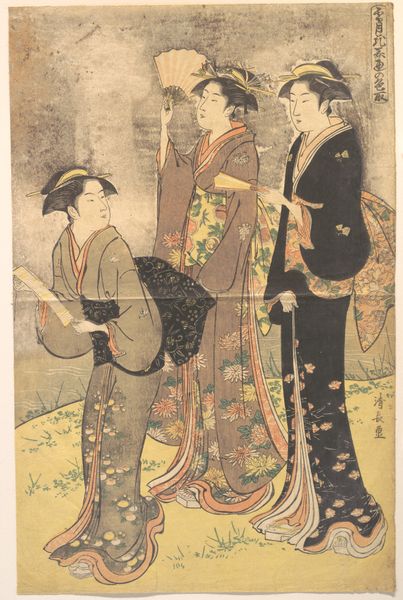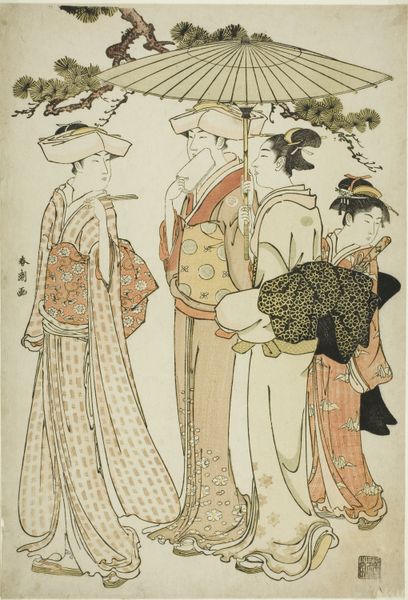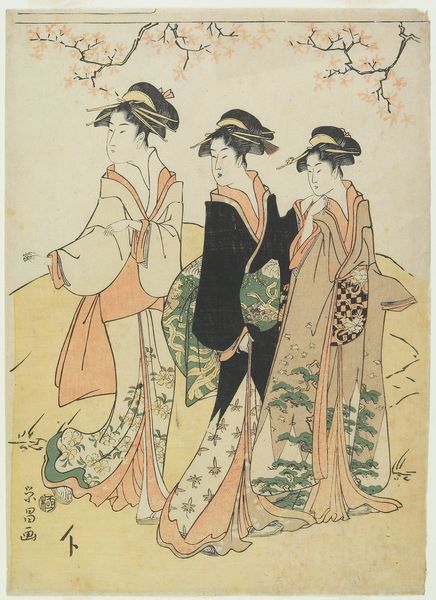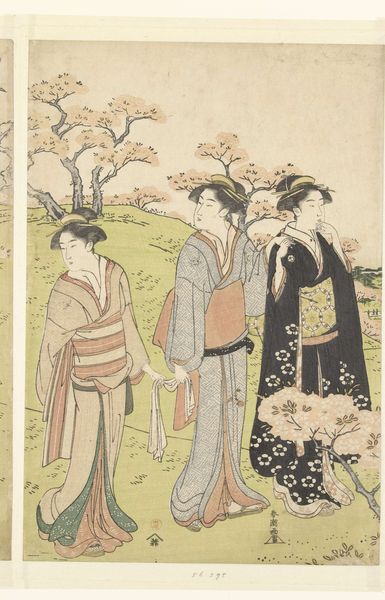
print, ink
#
ink painting
# print
#
asian-art
#
landscape
#
ukiyo-e
#
japan
#
figuration
#
ink
#
japanese
#
genre-painting
Dimensions: 36.4 × 24.4 cm (14 5/16 × 9 9/16 in.)
Copyright: Public Domain
Curator: This is Katsukawa Shunsho's "Women Visiting an Inari Shrine," a woodblock print likely created between 1780 and 1801. What strikes you first about this image? Editor: Well, the composition is remarkably delicate, and that limited color palette really focuses my attention on the precise patterns of the kimonos and their draped folds. Curator: Absolutely. The printing process would have been quite complex, demanding careful carving of separate blocks for each color and intricate registration. And thinking about those materials, paper and pigment, reminds us that these were trade goods, objects of consumption circulated in a very particular economic system. The very act of buying prints was part of participating in that world. Editor: Which brings up an interesting point about its role as ukiyo-e. Genre scenes like this became incredibly popular among the merchant class and newly-rich bourgeoisie. The shrine visit, a blend of spiritual devotion and social outing, reflecting an interesting moment in Edo society when wealth started shifting social roles and traditions. What can you tell me about the cultural significance of the Inari Shrine in relation to its patrons at that time? Curator: Inari shrines were particularly favored by merchants and artisans for their association with prosperity and rice, important for those seeking increased wealth and stability, further indicating its function within an economy based on desire and mass manufacture. I'm also fascinated by the depiction of women and what role gender norms play here. Editor: Good point. While seemingly celebrating female sociability, one could also argue that these prints played a role in constructing an ideal, or even fetishized, image of women within a male-dominated society. They weren't necessarily made *for* women, right? The context of artistic production shapes how we view its content, doesn't it? Curator: Indeed. The print offers us an insight into the complex interplay of piety, commercialism, and social spectacle of the time. I appreciate that you highlighted the material and labor embedded in even the simplest looking objects of devotion. Editor: And in appreciating its context we recognize this isn't merely aesthetic, but political.
Comments
No comments
Be the first to comment and join the conversation on the ultimate creative platform.
